Exhibition dates: 7th October 2016 – 26th February 2017
An exhibition showcasing Lesbian, Gay, Bisexual, Transgender, and Queer artistic life in New York City through the social networks of Leonard Bernstein, Mercedes de Acosta, Harmony Hammond, Bill T. Jones, Lincoln Kirstein, Greer Lankton, George Platt Lynes, Robert Mapplethorpe, Richard Bruce Nugent, and Andy Warhol.
Curators: Donald Albrecht, MCNY curator of architecture and design, and Stephen Vider, MCNY Mellon Postdoctoral Fellow.
Richard Bruce Nugent (American, 1906-1987)
Lucifer
1930
From the Salome series
Watercolour on cardstock
Art & Artifacts Division, Schomburg Center for Research in Black Culture, The New York Public Library, Astor, Lenox and Tilden Foundations
#POD
This is part 1 of a monster, two-part posting on this fabulous extravaganza: Gay Gotham: Art and Underground Culture in New York at the Museum of the City of New York, “a groundbreaking exhibition that explores New York’s role as a beacon for lesbian, gay, bisexual, and transgender (LGBT) artists seeking freedom, acceptance, and community.”
Freedom. Acceptance. Community. A tripartite motto to which we could add equality (different from acceptance), echoing the Brotherhood of man of the Third Republic of France. In these days of Lumpism, we do have an idea how important these concepts are – for our civil liberties, for our sexual freedom, and for our right, our write, to choose and voice an opinion which is different from that of the oligarchy. We know we have to stand up to these bigots.
Freedom to be ourselves has always been at the core of GLBTQI identity. Our Point of Difference (#POD).
While I came out in London six short years after Stonewall, and was wearing silver hair, eye shadow, rings on every hand and pink and cream satin bomber jackets in London in the 1970s, many of the people pictured in this posting had no doubt endured numerous persecutions for who they were many years before it was acceptable to be GLBTQI. And still today in many parts of the world (Russia, Papua New Guinea, South America, and Africa) GLBTQI people face discrimination and death.
But do you know what?
The world would be a much poorer, less creative place without all of the GLBTQI people who have lived over all of the centuries of human existence… continuing to be themselves in the face of adversity and resentment. Continuing to enrich the lives of themselves and other human beings.
Are we going away? Hell no!
I have spent hours researching the people in this posting, adding sound and video provided by the Museum of the City of New York. Because this information deserves to be out there on the WWW.
As we still strive for equality or even just existence in the world, our #POD, in New York or wherever – not our assimilation into the main stream – is what makes us relevant and interesting and emotional in this world. Long may it remain so.
Dr Marcus Bunyan
PS The dancing in the Audio and video excerpts from Filling Station (1938) and Billy the Kid (1938), especially the latter, are a joy to behold!
Many thank to the Museum of the City of New York for allowing me to publish the art work in the posting. Please click on the photographs for a larger version of the image.
Richard Bruce Nugent (American, 1906-1987)
Drawing from Alexander Gumby’s scrapbook
1920s
Ink on paper Alexander Gumby Collection of Negroiana, Rare Book and Manuscript Library, Columbia University
1910-1960: Portraits
Richard Bruce Nugent
Richard Bruce Nugent (July 2, 1906 – May 27, 1987), aka Richard Bruce and Bruce Nugent, was a writer and painter in the Harlem Renaissance. (The Harlem Renaissance, a cultural, social, and artistic explosion that took place in Harlem, New York spanned from about 1918 until the mid-1930s). One of many gay artists of the Harlem Renaissance, he was one of few who was out publicly. Recognised initially for the few short stories and paintings that were published, Nugent had a long productive career bringing to light the creative process of gay and black culture. …
During his career in Harlem, Nugent lived with writer Wallace Thurman from 1926-1928 which led to the publishing of “Smoke, Lilies, and Jade” in Thurman’s publication “Fire!!!”. The short story was written in a modernist stream-of-consciousness style, its subject matter was bisexuality and more specifically interracial male desire. Many of his illustrations were featured in publications, such as “Fire!!!” along with his short story. Four of his paintings were included in the Harmon Foundation’s exhibition of Negro artists, which was one of the few venues available for black artists in 1931. His only stand-alone publication, “Beyond Where the Stars Stood Still,” was issued in a limited edition by Warren Marr II in 1945. …
Nugent’s aggressive and honest approach to homoerotic and interracial desire was not necessarily in the favour of his more discreet homosexual contemporaries. Alain Locke chastised the publication “Fire!!!” for its radicalism and specifically Nugent’s “Smoke, Lilies, and Jade” for promoting the effeminacy and decadence associated with homosexual writers.
Nugent bridged the gap between the Harlem Renaissance and the black gay movement of the 1980s and was a great inspiration to many of his contemporaries… As one of the last survivors of the Harlem Renaissance, Nugent was a sought-after interview subject in his old age, consulted by numerous biographers and writers on both black and gay history. He was interviewed in the 1984 gay documentary, “Before Stonewall,” and his work was featured in Isaac Julien’s 1989 film, Looking for Langston.
Text from the Wikipedia website
Richard Bruce Nugent (American, 1906-1987)
“Drawings for Mulattoes” Numbers 2 and 3
1927
Illustration in Ebony and Topaz: A Collectanea
Fales Library and Special Collections, New York University
Richard Bruce Nugent (American, 1906-1987)
Self-portrait
1930s
Pencil on paper
Art & Artifacts Division, Schomburg Center for Research in Black Culture, The New York Public Library, Astor, Lenox and Tilden Foundations
Richard Bruce Nugent (American, 1906-1987)
Smoke, Lilies and Jade
c. 1925
Mixed-media work
Howard University Gallery of Art, Washington, DC
Richard Bruce Nugent poems and prose read by Rodney Evans, director of the 2004 film Brother to Brother. Audio produced for the exhibition by Tim Cramer.
Abram Poole (American, 1883-1961)
Mercedes de Acosta
1923
Oil on canvas
Santa Barbara Museum of Art, Gift of Mercedes de Acosta in honour of Ala Story
Mercedes de Acosta
Mercedes de Acosta (March 1, 1893 – May 9, 1968) was an American poet, playwright, and novelist. Four of de Acosta’s plays were produced, and she published a novel and three volumes of poetry. …
De Acosta was involved in numerous lesbian relationships with Broadway’s and Hollywood’s elite and she did not attempt to hide her sexuality; her uncloseted existence was very rare and daring in her generation. In 1916 she began an affair with actress Alla Nazimova and later with dancer Isadora Duncan. Shortly after marrying Abram Poole in 1920, de Acosta became involved in a five-year relationship with actress Eva Le Gallienne. De Acosta wrote two plays for Le Gallienne, Sandro Botticelli and Jehanne de Arc. After the financial failures of both plays they ended their relationship.
Over the next decade she was involved with several famous actresses and dancers including Greta Garbo, Marlene Dietrich, Ona Munson, and Russian ballerina Tamara Platonovna Karsavina. Additional unsubstantiated rumors include affairs with Pola Negri, Eleonora Duse, Katherine Cornell, and Alice B. Toklas.
An ardent liberal, de Acosta was committed to several political causes. Concerned about the Spanish Civil War, which began in 1936, for example, she supported the loyalist Republican government that opposed the fascist Franco regime. A tireless advocate for women’s rights, she wrote in her memoir, “I believed… in every form of independence for women and I was… an enrolled worker for women’s suffrage.” …
De Acosta’s best-known relationship was with Greta Garbo. When Garbo’s close friend, author Salka Viertel, introduced them in 1931, they quickly became involved. As their relationship developed, it became erratic and volatile with Garbo always in control. The two were very close sporadically and then apart for lengthy periods when Garbo, annoyed by Mercedes’ obsessive behaviour, coupled with her own neuroses, ignored her. In any case, they remained friends for thirty years during which time Garbo wrote de Acosta 181 letters, cards, and telegrams. About their friendship, Cecil Beaton, who was close to both women, recorded in his 1958 memoir, “Mercedes is [Garbo’s] very best friend and for 30 years has stood by her, willing to devote her life to her”.
De Acosta was described in 1955 by Garbo biographer, John Bainbridge, as “a woman of courtly manners, impeccable decorative taste and great personal elegance… a woman with a passionate and intense devotion to the art of living… and endowed with a high spirit, energy, eclectic curiosity and a varied interest in the arts.”
Text from the Wikipedia website
“After Cecil Beaton accompanied her to the theater one night in 1930, he wrote in his diary that he sensed people looking at him and questioning why he associated with “that furious lesbian.” She often boasted of her sexual prowess, saying “I can get any woman from any man.” There was perhaps justification for Alice B. Toklas’s observation, “Say what you will about Mercedes de Acosta, she’s had the most important women of the twentieth century.” …
Even though she avoided direct representation of same-sex eroticism in her writing, she freely “smuggled in” ideas and issues common to those of us in the homosexual community but she put them in a heterosexual setting. It is what one scholar calls “queening.”
Mercedes de Acosta was not hugely famous. Her contributions to the theater were minimal. Yet her story reveals a woman who stood up courageously for her beliefs and values. She seldom stumbled, even when her friends and peers turned against her. She lived her desire and paid the price. Her love for other women and her struggle for acceptance were certainly sources of her originality and fuelled her writing. Perhaps the description of her as “that furious lesbian” should become an admirable attribute rather than a scornful slur.”
Robert A Schanke. “Mercedes de Acosta,” on the Robert Schanke website Nd [Online] Cited 06/07/2016. No longer available online
Abram Poole (American, 1883-1961)
Mercedes de Acosta (detail)
1923
Oil on canvas
Santa Barbara Museum of Art, Gift of Mercedes de Acosta in honour of Ala Story
Anonymous photographer
Eva Le Gallienne in Jehanne d’Arc
1925
Museum of the City of New York
Gift of Mercedes De Acosta
Anonymous photographer
Effie Shannon as Marie-Louise (left) and Michael Strange in the title role of L’Aiglon
1927
Gelatin silver print
Museum of the City of New York, Gift of Mr and Mrs Spencer Merriam Berger
Janet Flanner (American, 1892-1978)
Letter in the shape of a tulip from Janet Flanner to Mercedes de Acosta
1928
The Rosenbach, Philadelphia
Janet Flanner (March 13, 1892 – November 7, 1978) was an American writer and pioneering narrative journalist who served as the Paris correspondent of The New Yorker magazine from 1925 until she retired in 1975. She wrote under the pen name “Genêt”. She also published a single novel, The Cubical City, set in New York City. She was a prominent member of America’s expatriate community living in Paris before WWII. Along with her longtime partner Solita Solano, Flanner was called “a defining force in the creative expat scene in Paris.” She returned to New York during the war and split her time between there and Paris until her death in 1978.
Text from the Wikipedia website
George Platt Lynes (American, 1907-1955)
Cecil Beaton
Undated
Inscribed by Beaton to Mercedes de Acosta
The Rosenbach, Philadelphia
George Hoyningen-Huene (American-Russian, 1900-1968)
Mercedes de Acosta
1934
Modern print
Courtesy The Rosenbach, Philadelphia
De Acosta dabbled in several art forms, but her most impressive creation was herself – a strong and original personality and an unabashedly out lesbian. “In a period of time that many people even doubted the reality of female orgasm, De Acosta was making women-on-women pleasure the smart, chic, and glamorous thing to do,” wrote a colleague, Christopher Harrity … “Her biography, with back-up documentation, proves that same-sex love was alive and well in a period of time when it could have been buried under the usual denial and subterfuge.” She also had great personal style, cutting a dashing figure with her arresting profile, her short, slicked-back hair, and her usual garb of tricorn hat and cape. She famously boasted, “I can get any woman from a man.”
Anonymous. “Women Who Paved the Way: Mercedes De Acosta,” on the Advocate website Nd [Online] Cited 27/02/2023
Cecil Beaton (British, 1904-1980)
From left, Alfred Stieglitz, Mercedes de Acosta, and Georgia O’Keeffe
c. 1943
Gelatin silver print
The Rosenbach, Philadelphia
Works by Mercedes de Acosta works read by performers Moe Angelos and Carmelita Tropicana. Audio produced for the exhibition by Tim Cramer.
The Museum of the City of New York presents Gay Gotham: Art and Underground Culture in New York, a groundbreaking exhibition that explores New York’s role as a beacon for lesbian, gay, bisexual, and transgender (LGBT) artists seeking freedom, acceptance, and community.
The first exhibition of its kind to be presented by a New York City cultural institution in terms of depth and scope, Gay Gotham peels back the layers of New York City’s LGBT, or queer, life that thrived even in the shadows to reveal an often-hidden side of the city’s history and underscore the power of artistic collaboration to transcend oppression. The exhibition, which runs through February 26, 2017, will examine the worlds of New York’s famous LGBT cultural innovators, as well as those of ordinary citizens. The exhibition will also identify historical trends that led to the increased visibility of LGBT artists over the course of the 20th century.
“New York City, an international source of creativity throughout its history, provided the canvas, stage, and backdrop for LGBT artists and cultural innovators, and helped make it possible for them to transcend oppression and discrimination,” says Whitney Donhauser, Ronay Menschel Director of the Museum of the City of New York. “Gay Gotham not only exhibits, but also celebrates the vibrant lives of artists who were suffering from injustice, and offers optimism for tomorrow.”
Gay Gotham brings to life the queer networks that sprang up in the city from the early-20th century through the mid-1990s – a series of artistic subcultures whose radical ideas had lasting effects on the mainstream. It explores the artistic achievements and creative networks of ten individuals, as well as four key ways that such networks are made: place-making (making places to meet and work together); posing (creating portraits of friends and artists); printing (creating publications); and performing (representing LGBT life in theater and film). The show is also organised into three chronological sections, dividing LGBT art and underground culture in 20th century New York:
Visible Subcultures: 1910-1930
Open Secrets: 1930-1960
Out New York: 1960-1995
Occupying two full galleries, Gay Gotham features 225 works from a mix of iconic and lesser-known LGBT artists, whose work will be presented chronologically to reveal the trajectory of queer life in 20th century New York: composer Leonard Bernstein; playwright, poet and novelist Mercedes de Acosta; activist Harmony Hammond; dancer and choreographer Bill T. Jones; arts impresario Lincoln Kirstein; artist Greer Lankton; photographer George Platt Lynes; artist and photographer Robert Mapplethorpe; artist and author Richard Bruce Nugent; and artist Andy Warhol. Each of these individuals will be examined within the overlapping networks of numerous fellow artists and colleagues who advanced their professional careers, sustained their social lives, and propelled them into the city and nation’s cultural mainstream.
Gay Gotham, curated by Donald Albrecht, MCNY curator of architecture and design, and Stephen Vider, MCNY Mellon Postdoctoral Fellow, includes paintings, drawings, photographs, sound recordings, and films that explore queer artistic achievements in music, the visual arts and theatre during the 20th century. Ephemera such as correspondence and scrapbooks are also displayed, illuminating the artists’ personal bonds and revealing secrets that were scandal provoking in their time and remain largely unknown today.
On the impetus behind the show, Curator Donald Albrecht explained: “While exploring New York City’s gay artistic communities in past shows here at the Museum, I found them to be consistently hidden in plain sight and thought an exhibition ‘un-hiding’ these queer networks would be a revelation. Gay Gotham is the result, and I hope visitors gain an understanding of the cultural communities that formed as a response to injustice.”
Some of the works that will be featured in the show are: Bernstein’s own annotated copy of Romeo and Juliet, the inspiration for the 1957 Broadway musical West Side Story, alongside original drawings of the production’s sets and costumes; a circa 1970 handmade, collaged scrapbook by Robert Mapplethorpe that includes images of friends and lovers like Patti Smith; Arnie Zane’s video of Keith Haring hand painting the body of Zane’s partner, dancer and choreographer Bill T. Jones – a collaboration of three leaders of the 1980s queer downtown art scene; several of artist Greer Lankton’s dolls, including a life-size one of Diana Vreeland made in 1989 for a Barneys display window.
Joel Sanders Architects designed the exhibition to give spatial expression to the show’s two main themes: the people and places that allowed queer artistic life to flourish in New York City. On both floors of the exhibition, the perimeter gallery walls are painted a deep purple, the colour traditionally associated with queer culture. The centre of both galleries will feature maps setting artistic explorations against the evolving backdrops of LGBT life in New York City, including gay neighbourhoods and nightspots, as well as activist groups and key social and cultural events, such as protests and parades.
Gay Gotham will be accompanied by a 304-page book, Gay Gotham: Art and Underground Culture in New York, by Donald Albrecht, with Stephen Vider and published by Skira Rizzoli. It includes more than 350 images, illustrations and background essays on the social and cultural themes of the LGBT artistic underground, as well as portraits of the show’s iconic artistic figures.
Press release from the Museum of the City of New York
George Platt Lynes (American, 1907-1955)
Lincoln Kirstein
1940s-1950s
Gelatin silver print
The Metropolitan Museum of Art, Gift of Lincoln Kirstein, 1985
Lincoln Kirstein
Lincoln Edward Kirstein (May 4, 1907 – January 5, 1996) was an American writer, impresario, art connoisseur, philanthropist, and cultural figure in New York City, noted especially as co-founder of the New York City Ballet. He developed and sustained the company with his organising ability and fundraising for more than four decades, serving as the company’s General Director from 1946 to 1989. …
Beginning in 1919, Kirstein kept a diary continuing through the practice until the late 1930s. In a 2007 biography of Kirstein, The Worlds of Lincoln Kirstein, Martin Duberman drew on his diaries, as well as Kirstein’s numerous letters. Kirstein wrote about enjoying sex with various men including Harvard undergraduates, sailors, street boys, and casual encounters in the showers at the 63rd St. YMCA. He had longer affairs with Pete Martinez, a dancer, Dan Maloney, an artist, and Jensen Yow, a conservator. Kirstein had both platonic relationships and many that started as casual sex and developed into long-term friendships…
Kirstein’s eclectic interests, ambition and keen interest in high culture, funded by independent means, drew a large circle of creative friends from many fields of the arts. These included: Glenway Wescott, George Platt Lynes, Jared French, Bernard Perlin, Pavel Tchelitchev, Katherine Anne Porter, Barbara Harrison, Gertrude Stein, Donald Windham, Cecil Beaton, Jean Cocteau, W. H. Auden, George Tooker, Margaret French Cresson, Walker Evans, Sergei Eisenstein and others.
In his later years, Kirstein struggled with bipolar disorder – mania, depression, and paranoia. He destroyed the studio of friend Dan Maloney. He sometimes had to be constrained in a straitjacket for weeks at a psychiatric hospital. His illness did not generally affect his professional creativity until the end of his life.
Text from the Wikipedia website
Ballet in America
After seeing ballets by George Balanchine, including Prodigal Son (the first Balanchine work he was to experience) in 1929 and Les Ballets 1933 in Paris, Kirstein met the choreographer for the first time in London in 1933 and immediately invited him to work in the United States where together they would build an American ballet tradition. Balanchine’s response, “But, first a school.” is now part of ballet history. In 1934, the School of American Ballet opened its doors on Madison Avenue with Kirstein as president, a post he held until his retirement in 1989.
Together, Balanchine and Kirstein embarked on the creation of a permanent company to realise their vision. There would be four such enterprises before the establishment of New York City Ballet in 1948. The first of these, American Ballet Company, toured in the eastern United States and was the resident ballet troupe for the Metropolitan Opera (performing under the name American Ballet Ensemble) from 1935-1938. A second company, Ballet Caravan was founded in 1936 to tour and produced notably, among other American works, Lew Christensen’s Filling Station and Eugene Loring’s Billy the Kid with libretti by Kirstein. It was succeeded by American Ballet Caravan which made a much-acclaimed tour of South America in 1941 before disbanding. Upon Kirstein’s return to the States from military service in World War II, Ballet Society was founded in 1946 to present performances for a subscription audience. Following a 1948 performance of Orpheus, the invitation came from City Center’s then-Chairman of the Executive Committee, Morton Baum, to establish a resident company to be known as New York City Ballet as part of the City Center of Music and Drama. Kirstein became the Company’s General Director and served in that capacity until relinquishing the post in 1989. …
The distinguished English critic Clement Crisp has written, “Lincoln Kirstein was a man of protean gifts and immense intellectual and organisational energy. He was one of those rare talents who touched the entire artistic life of their time: ballet, film, literature, theatre, paintings, sculpture, photography – all occupied his attention. These many and other seemingly disparate concerns were united by a guiding intelligence which was uncompromising and uncompromisingly generous and served as the artistic conscience of his era. This was the essentially American quality of his work: that desire to ameliorate and inspire a society to the goal of a more humane and imaginatively rich world. To a grand extent his work was as intermediary between the arts and a vast public who benefited from his genius.”
Classical dance amplified by Balanchine’s own genius, expressed perfectly Lincoln’s immovable conviction that each human being contains the seeds of perfectibility. When he was 28, a significant year, he wrote that ballet provided the means for the human body in heightened capability, to set a poetic standard for each person’s ideal capacity. And he wrote and worked toward that standard in connection with everything he cared for all his life. Lincoln’s unending personal struggles, and searching and learning, led him in turn to give so much of himself to others. With uncanny intuition he understood who each one of us was: artists, students, friends, supporters alike were woven into a family with common cause.
Text from the New York City Ballet website [Online] Cited 06/02/2017. No longer available online
Lincoln Kirstein (American, 1907-1996)
Blast at Ballet: A Corrective for the American Audience (Marstin Press, New York)
1938
Private collection
George Platt Lynes (American, 1907-1955)
From left, Michael Kidd, Beatrice Tomkins, and Ruby Asquith in Billy the Kid
1938, printed c. 1953
Gelatin silver print
The Metropolitan Museum of Art, Gift of Lincoln Kirstein, 1985
Paul Cadmus (American, 1904-1999)
“Ray” costume design for the ballet Filling Station
1937
Gouache, pencil, and ink on paper
The Museum of Modern Art, New York. Gift of Lincoln Kirstein, 1941
Paul Cadmus
In the gorgeous, occasionally garish, always gratifying works of the great American artist Paul Cadmus, sailors and sunbathers, models and mannequins, nitwits and nudes all are suffused with a sensuality born equally of idyllic splendour and urban squalor, natural grace and graceful artifice. Active since the 1930s as a renderer of pretty boys and ugly ploys, Cadmus has spent many remarkable decades honing a singularly complex style of idealized sexuality and vivid displeasure in justly celebrated paintings, drawings and etchings of nude figures, fantastical scenes and supercharged allegories.
While often working quite deliberately in the genres of social satire and community critique, Cadmus is just as compelling when exploring the personal and political proclivities of bodies in rest and motion. Male bodies, that is. More than most artists of his substantial stature, Cadmus has detailed with exquisite tenderness and unblinking bluntness the manner in which gay males – and the gay male gaze – represent the polemics of aesthetics. …
As much as some younger artists would like to see Cadmus adopt the persona of nonagenarian poster boy for Gay Y2K, he’s generally content to let his images speak for themselves. That’s his choice to make; more perplexing, frankly, is the majority of critical writing on Cadmus that blatantly ignores his gay perspective and homoerotic imagery. Lincoln Kirstein, founding director of the New York City Ballet and the artist’s self-defined bisexual brother-in-law (married to Cadmus’s sister, Fidelma), wrote the “definitive” Cadmus monograph with nary a mention of the artist’s crucial homoeroticism, preferring to tiptoe around the truth with statements like, “As for sexual factors, he has without ostentation or polemic long celebrated somatic health in boys and young men for its symbolic range of human possibility. His addiction to aspects of physical splendor has never been provocative, sly, nor ambitious to proselytize.”
I wish Kirstein had taken a more careful look at the slender lad sporting a box kite and a noticeable bulge in “Aviator,” or the mine’s-bigger-than-yours posturing and relentless cruising on display in “Y.M.C.A. Locker Room” … Even more telling is “Manikins,” in which two small artist’s models lovingly do the nasty atop a copy of Corydon, André Gide’s plea for queer rights.
Steven Jenkins. “Paul Cadmus: The Body Politic,” on the Queer Arts Resource website [Online] Cited 18/11/2021. No longer available online
Excerpts from Filling Station, a seminal ballet with an American theme and setting, choreographed and performed by Lew Christensen with Ballet Caravan (1938). Perhaps the most enduring and popular work by Christensen, the comic ballet combined classical dancing with vaudevillian antics.
And excerpts from Billy the Kid (1938) a ballet written by the American composer Aaron Copland on commission from Lincoln Kirstein. It was choreographed by Eugene Loring for Ballet Caravan. Along with Rodeo and Appalachian Spring, it is one of Copland’s most popular and widely performed pieces.
With permission of the Museum of the City of New York for Art Blart.
George Platt Lynes
The greatest photographer of the male nude the world has ever seen – George Platt Lynes (American, April 15, 1907 – December 6, 1955).
Lynes worked as a fashion photographer in his own studio in New York (which he opened in 1932) before moving to Hollywood in 1946 where he took the post of Chief Photographer for the Vogue studios. Although an artistic success the sojourn was a financial failure and he returned to New York in 1948. Although continuing his commercial work he became disinterested in it, concentrating his energies on photographing the male nude. He began a friendship with Dr Alfred Kinsey of the Kinsey Institute in Bloomington, Indiana and helped with his sex research. Between 1949 and 1955, Lynes sold and donated much of his erotic nudes to Kinsey.1 By May 1955 he had been diagnosed terminally ill with lung cancer. He closed his studio. He destroyed much of his print and negative archives particularly his male nudes. However, it is now known that he had transferred many of these works to the Kinsey Institute. After a final trip to Europe, Lynes returned to New York City where he died.
See my full text George Platt Lynes and the male nude including many photographs and another text by Associate Professor Elspeth H. Brown (University of Toronto).
George Platt Lynes (American, 1907-1955)
Self-Portrait, in Tights
1948
Gelatin silver print
Solomon R. Guggenheim Museum, New York
Gift, Anonymous and In Kind
Canada, 1998
George Platt Lynes (American, 1907-1955)
Marsden Hartley
1942
Gelatin silver print
Marsden Hartley Memorial Collection, Bates College Museum of Art
George Platt Lynes (American, 1907-1955)
George Tooker at 5 St. Luke’s Place, New York, with Paul Cadmus and Jared French in Mirror
c. 1940
Vintage silver print
Estate of George Tooker, Courtesy of DC Moore Gallery, New York
George Tooker
George Clair Tooker, Jr. (August 5, 1920 – March 27, 2011) was an American figurative painter. His works are associated with Magic realism, Social realism, Photorealism and Surrealism. His subjects are depicted naturally as in a photograph, but the images use flat tones, an ambiguous perspective, and alarming juxtapositions to suggest an imagined or dreamed reality. He did not agree with the association of his work with Magic realism or Surrealism, as he said, “I am after painting reality impressed on the mind so hard that it returns as a dream, but I am not after painting dreams as such, or fantasy.” …
His most well known paintings carry strong social commentary, and are often characterised as his “public” or “political” pieces. Some of these include: The Subway (1950), Government Bureau (1955-1956), The Waiting Room (1956-1957), Lunch (1964), Teller (1967), Waiting Room II (1982), Corporate Decision (1983), and Terminal (1986). These works are particularly influential, because they draw from universal experiences of modern, urban life. Many portray visually literal depictions of social withdrawal and isolation. In many ways, these images reveal the negative side of the subject matter celebrated in Impressionism. Modernity’s anonymity, mass-production, and fast pace are cast under an unforgiving, bleak, shadow-less light that conveys a sense of foreboding and isolation…
While Tooker’s “public” imagery is hostile and solemn, his “private” images are often more intimate and positive. Some of these include the ten images of the Windows series (1955-1987), Doors (1953), Guitar (1957), Toilette (1962), and the Mirror series (1962-1971). Many of these images juxtapose beauty and ugliness, youth and age, in the analysis of the female body. The space is often compressed by a curtain or close-up wall, so that the viewer is confronted by the symbolic identity of the protagonist.
Text from the Wikipedia website
“Mr. Cadmus’s exuberant use of homosexual themes in his work also encouraged Mr. Tooker to address that aspect of his identity in paintings like the terrifying, Bruegel-esque “Children and Spastics” (1946), in which a group of leering sadists torment three frail, effeminate men.
Equally influential was Jared French, part of Mr. Cadmus’s intimate circle, whose interest in Jungian archetypes and in the frigid, inscrutable forms of archaic Greek and Etruscan art inspired Mr. Tooker to take a more symbolic, mythic approach to his subject matter.”
William Grimes. “George Tooker, Painter Capturing Modern Anxieties, Dies at 90,” on The New York Times website, March 29, 2011 [Online] Cited 18/11/2021
George Platt Lynes (American, 1907-1955)
Jared French
1938
Gelatin silver print
The Metropolitan Museum of Art, David Hunter McAlpin Fund, 1941
Jared French
Born in Ossining, New York, French received a Bachelor of Arts degree from Amherst College in 1925. Soon after this he met and befriended Paul Cadmus (1904-1999) in New York City, who became his lover. French persuaded Cadmus to give up commercial art for what he deemed, “serious painting”.
Jungian psychology is thought to have played an important influence upon the dream-like imagery in the paintings of French’s maturity. The highly stylised, archaic-looking figures in his paintings suggest that they are representative of the ancestral memory of all mankind, what Carl Jung called “the collective unconscious”. French himself was never explicit about the sources of his imagery, although on a stylistic level, the influence of early Italian Renaissance paintings by such masters as Mantegna and Piero della Francesca is evident, as it is also in the work of both Tooker and Cadmus. On the level of content, he made only one, short, public statement regarding his intentions:
“My work has long been concerned with the representation of diverse aspects of man and his universe. At first it was mainly concerned with his physical aspect and his physical universe. Gradually I began to represent aspects of his psyche, until in The Sea (1946) and Evasion (1947), I showed quite clearly my interest in man’s inner reality.” …
In 1938, French and Cadmus posed for a series photographs with the noted photographer George Platt Lynes (1907-1955). These photographs were not published or exhibited while Lynes was living and show the intimacy and relationship of the two. In the photographs, 14 of which survive today, the subjects, Cadmus and French, vacillate between exposure and concealment, with French generally being the more exhibitionist of the two. Cadmus stated that French was the model for all four male figures in his 1935 painting, Gilding the Acrobats, as well as his 1931 painting, Jerry.
Text from the Wikipedia website
Jared French (American, 1905-1988)
Billy the Kid costume sketch for “Billy’s Last Act”
1938
Watercolour and pencil on printed paper on cardboard with ink and pencil
The Metropolitan Museum of Art, David Hunter McAlpin Fund, 1941
Jared French (American, 1905-1988)
Billy the Kid costume sketch for “Billy’s Last Act” (detail)
1938
Watercolour and pencil on printed paper on cardboard with ink and pencil
The Metropolitan Museum of Art, David Hunter McAlpin Fund, 1941
Jared French (American, 1905-1988)
Billy the Kid costume sketch for “Alias as Drunken Cowboy”
1938
Watercolour on paper on cardboard with felt-tip pen
The Museum of Modern Art, New York, Gift of Lincoln Kirstein, 1941
Jared French (American, 1905-1988)
Billy the Kid costume sketch for “Alias as Drunken Cowboy” (detail)
1938
Watercolour on paper on cardboard with felt-tip pen
The Museum of Modern Art, New York, Gift of Lincoln Kirstein, 1941
George Platt Lynes (American, 1907-1955)
Fidelma Cadmus Kirstein
1941
Gelatin silver print
George Platt Lynes Collection, Harry Ransom Center, The University of Texas at Austin
George Platt Lynes (American, 1907-1955)
Orpheus (Nicholas Magallanes and Francisco Moncion)
1950
Modern print
Courtesy ClampArt, New York
George Platt Lynes (American, 1907-1955)
Jimmie Daniels
Undated
Gelatin silver print
George Platt Lynes Collection, Harry Ransom Center, The University of Texas at Austin
A fresh-faced teenager, Jimmie Daniels arrived in Harlem sometime during the mid-1920’s. He was lithe, delicate, and had an engaging, infectious smile that he would soon learn to use to his advantage. Singer Alberta Hunter, a lifelong friend, remembered the time well. “This one was just a little one” she said. “Handsome? Oh, was he handsome! He had hair as red as fire, and his folks had money.” Dare anyone have said that they thought the young, refined singer with the impeccable style, grace and proper enunciation was just a little snobbish and pretentious too?
It wouldn’t have mattered! It certainly would not have stopped the young, attractive Daniels from enjoying the ride of his youth, and becoming one of the most popular cafe singers and masters of ceremonies of the Harlem Renaissance. In demand from New York to Paris, these accomplishments were but stepping stones toward bigger and better things. Fortunately, the journey was documented by some of the leading photographers and artists of the time like George Platt Lynes, Carl Van Vechten and Richmond Barthe. And having several high profile, rich white boyfriends didn’t hurt him not one bit!
Anonymous text from the Fire Island Pines History website [Online] Cited 06/02/2017. No longer available online
Museum of the City of New York
1220 Fifth Ave at 103rd St., New York
Opening hours:
Open Daily 10am – 6pm


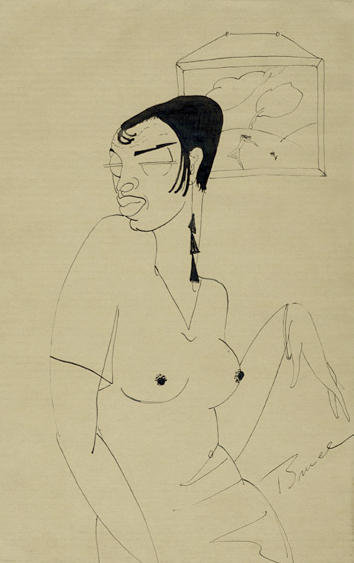
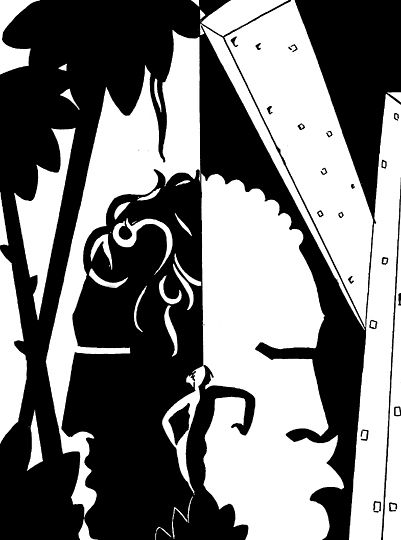


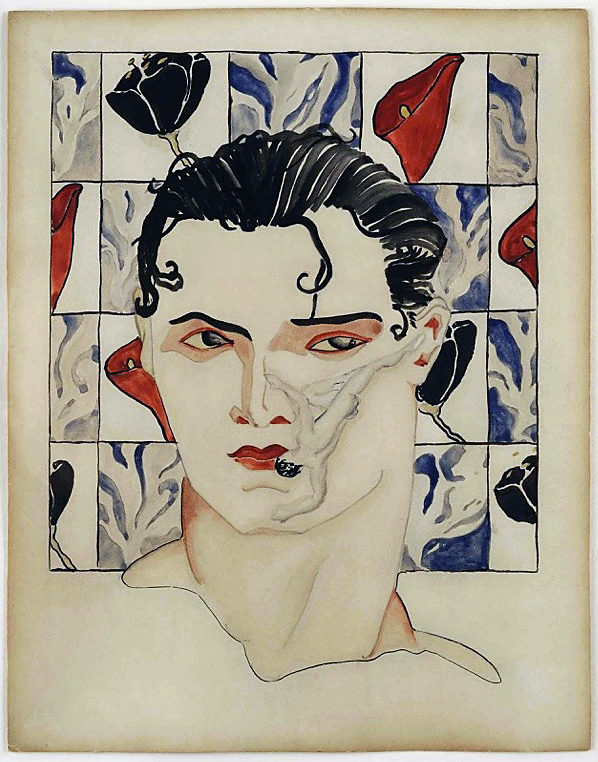




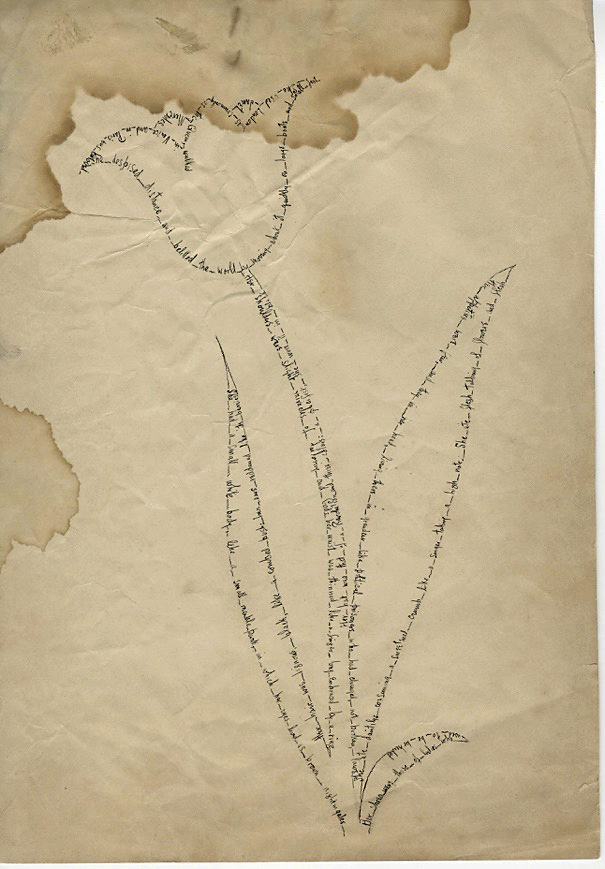









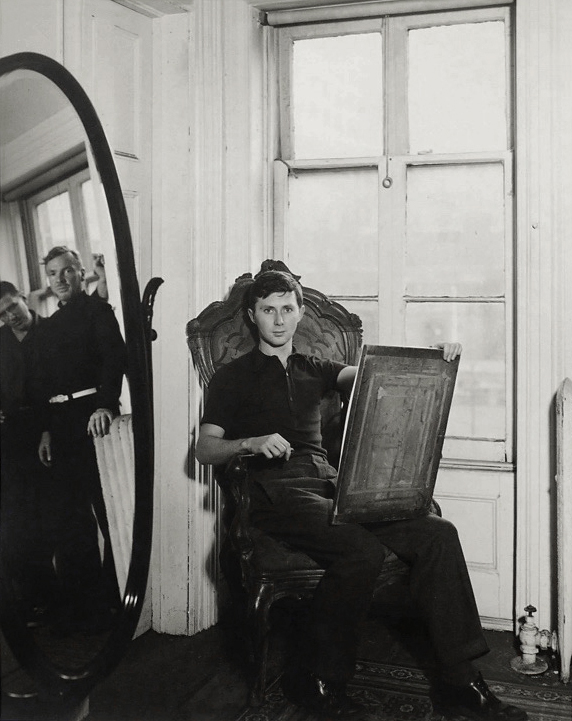
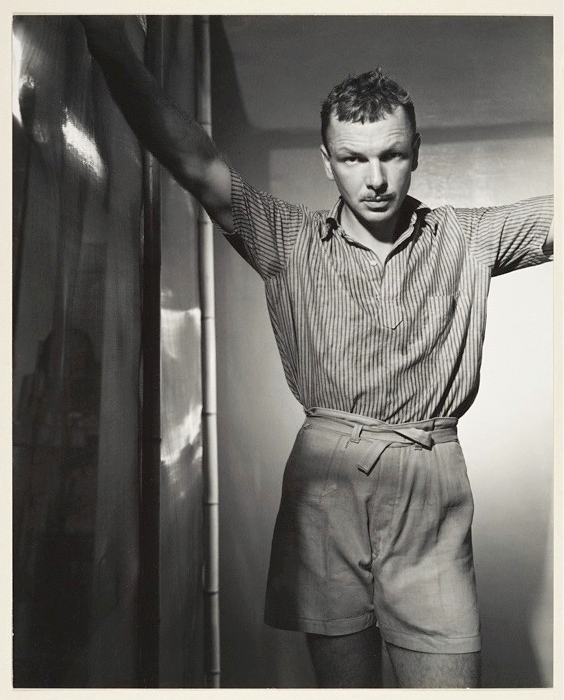


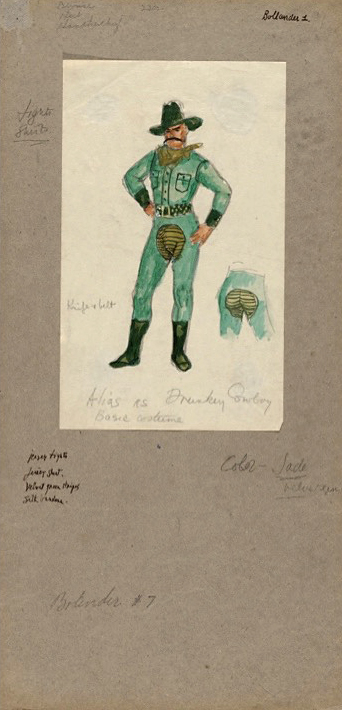




You must be logged in to post a comment.